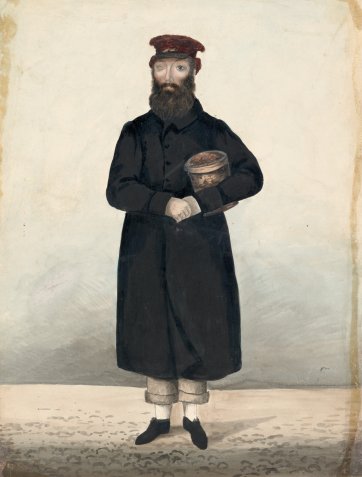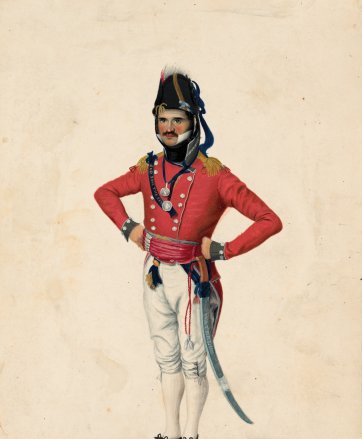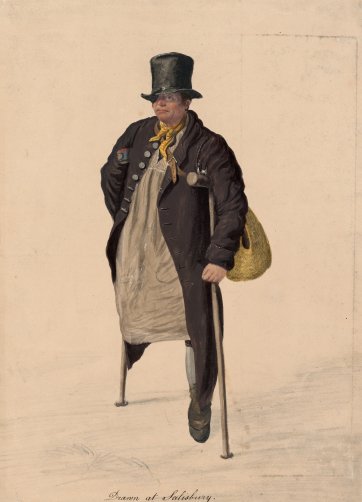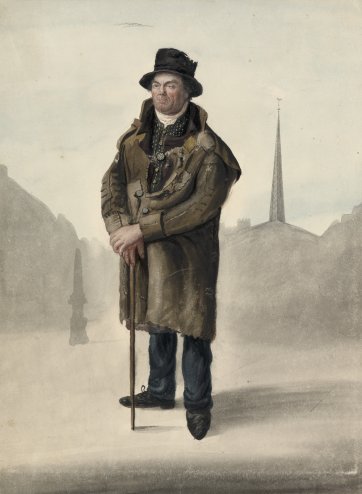At the start of the war with France in 1793, Britain’s standing army and navy comprised only some 40,000 soldiers and 100,000 sailors, but by the time of Waterloo (1815) there were an estimated 400,000 men under arms.
Following the final defeat of Napoleon, the majority of these forces were gradually disbanded, and the veterans were not easily absorbed into the (contracting) domestic economy. Most had been unskilled (or worse) at the time of their enlistment, the Duke of Wellington himself describing them as ‘the scum of the earth … it really is wonderful that we should have made them the fine fellows they are’.
The troops flooded home, but there was little work and few prospects for them there, especially for the permanently incapacitated. The derelict Old Soldier would become a familiar figure in the society and culture of the early 19th century – half a dozen of Dempsey’s characters have a history of infantry or maritime service.


















